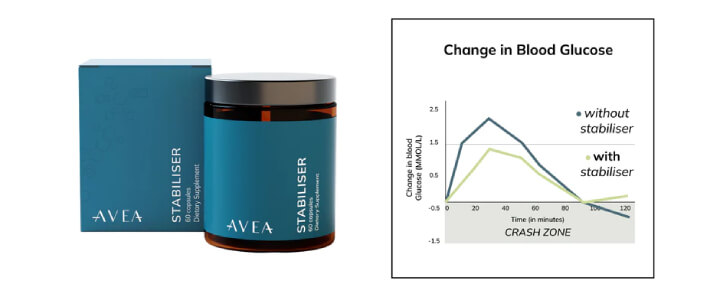In this article
Free guide to reverse your biological age

- Master the science of rejuvenation.
- Apply proven tips to turn back the clock.
- Transform your health with top longevity specialists.
What is prediabetes?
Prediabetes is a condition in which an individual has blood sugar levels that are higher than normal but not high enough to be classified as diabetes. In prediabetes, the body either does not produce enough insulin or does not use insulin effectively, which can lead to higher than normal blood sugar levels. People with prediabetes are at a higher risk of developing type 2 diabetes, as well as other health complications such as heart disease and stroke.
Symptoms of prediabetes

However, most people with prediabetes do not have any symptoms. The condition is often detected during routine medical checkups through a blood test that measures blood sugar levels.
Why is prediabetes a serious condition?
50% of those diagnosed with prediabetes are predicted to develop type II diabetes within the next 5-10 years if left unaddressed.

Type II diabetes is a silent killer which can lead to a range of health complications, including:
- Cardiovascular disease: People with diabetes are 2x more likely to develop heart disease and stroke– and at a younger age.
- Kidney damage: Diabetes is a leading cause of kidney failure. About 1 out of 3 adults with diabetes has kidney disease.
- Nerve damage: Diabetes can damage the nerves in the body, leading to diabetic neuropathy which is incurable. This results in a loss of sensation in the feet, hands, legs and arms. Increased sensitivity to pain occurs and it also becomes difficult to control muscle movements.
- Eye damage: Diabetes can cause damage to the blood vessels in the eyes, which can lead to blindness.
- Foot damage: Diabetes can cause damage to the blood vessels and nerves in the feet, which can lead to a loss of sensation and an increased risk of foot infections and amputations.
- Sexual dysfunction: Men and women with diabetes may experience sexual dysfunction.
- Skin problems: People with diabetes are at a higher risk of skin problems such as infections and slow-healing wounds.
- Alzheimer’s disease: People with diabetes are at a higher risk of developing Alzheimer’s disease (60% increase).
Current issue

There are several reasons why people may not worry about high blood sugar until it’s too late
Lack of awareness or undiagnosed: Many people may not be aware that they have high blood sugar or that it’s a serious health concern. They may not experience any symptoms or they may not understand the long-term risks associated with high blood sugar.
Delay in seeking medical attention: People may not seek medical attention until they start to experience symptoms or complications, which can be too late to prevent or mitigate long-term damage.
Denial: Some people may not want to accept that they have high blood sugar, especially if it means making lifestyle changes such as losing weight, eating a healthy diet, and getting regular physical activity.
Financial and socioeconomic barriers: Some people may not be able to afford regular check-ups, medications, and treatments which can delay early diagnosis and management.
How can I reverse prediabetes?

A high blood sugar level should be recognised as the worst health malefactor. It is in fact the beginning of nightmares in many people’s lives.
Regular check-ups and screenings can help to detect high blood sugar early and prevent or delay the development of diabetes and its complications. In case of prediabetes, fear not because it is not a lost cause. Prediabetes can be reversed!

Reversing prediabetes is all about bringing your blood sugar levels back to normal
Get your blood pumping and burn those excess calories.
- Being overweight or obese can cause insulin resistance, meaning that your cells are not as responsive to insulin. More insulin is needed to keep blood sugar levels stable. Inflammation also occurs, further contributing to insulin resistance. Lose any excess weight and sweat it out to improve your insulin sensitivity.
- Fatty liver is a condition that occurs when too much fat accumulates in the liver. This causes the liver to become less effective at regulating blood sugar levels. Exercising helps to somehow free the liver from excess fat and improves its functioning.
- Exercising also improves the balance of hormones that regulate blood sugar, such as glucagon and GLP-1, and also helps improve cardiovascular health.
- During exercise, the body burns glucose for energy. This automatically lowers blood sugar levels, especially during intense exercises as it increases the uptake of glucose by muscles.
- Improving beta cell function: Regular exercise can help to improve the function of beta cells in the pancreas, which are responsible for producing insulin.
Blood sugar balance supplement – The Stabiliser
Our Stabiliser is formulated with a unique combination of 3 natural ingredients that will help balance sugar levels.

This revolutionary formula slows and blocks the absorption of carbs during a meal, minimising glucose peaks and the associated “sugar crashes” that make you feel tired, while still allowing you to enjoy the foods you love. The Stabiliser also increases insulin sensitivity, concurrently helping you achieve and keep a healthy weight as well as avoid multiple metabolic diseases.

You can’t outrun a bad diet. As Dr. Mark Hyman says, food is real medicine.
- Reduce refined carbohydrates such as white bread, white rice, and sugary foods. Try to replace these foods with whole grain options, such as whole wheat bread, brown rice, and quinoa.
- Increase fibre intake to slow down the absorption of glucose in the blood, which can help to keep blood sugar levels stable. Try to eat more fruits, vegetables, whole grains, and legumes.
- Include healthy fats such as those found in nuts, seeds, avocado, and fatty fish to help to improve insulin sensitivity and reduce inflammation.
- Avoid added sugar in foods and drinks that contain added sugar, such as soft drinks, candy, and baked goods.
- Eat a balanced diet like the Mediterranean diet that includes protein, carbohydrates, and healthy fats at each meal.
- Eating smaller portion sizes can help you control your weight, which can be beneficial for managing prediabetes.
- Eat in the right order: Veggies followed by proteins, and last carbs.
- Limit processed food and opt for whole foods. Processed foods often contain added sugars, unhealthy fats, and other additives that can be harmful for prediabetes.
Tips to balance your blood sugar while eating out
- Take your Stabiliser before ordering.
- Always begin your meals with green vegetables or salad, followed by proteins and carbs last.
- Make sure your carbs are paired with proteins, fats, or veggies.
- Hydrate, a lot.
- Always keep sweet things, aka, dessert for the end.
- Take a short walk after a meal.
Conclusion
It’s important to note that prediabetes is a serious health condition and should not be ignored. If you have prediabetes, take steps to prevent or delay the development of type II diabetes and reduce your risk of complications.
Consult with a healthcare professional to understand your specific condition and the best way to manage it.
Prediabetes is reversible – take the matter in your hands and start stabilising your blood sugar.
















